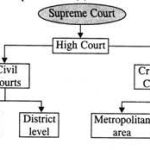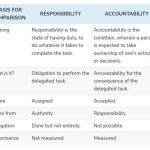
Fire safety
Table of Contents
Causes of Fire
Urban Issues—
- Overcrowding
- Unregulated commercial activities.
- Challenges in Slums—construction with inflammable materials, unauthorized electrical connections, unsafe wiring etc.
Carelessness & apathy: short-circuiting due to Faulty Wiring, Storage of Flammable & Combustible Materials
Politico-bureaucratic-Developer nexus / Adm. Challenges—
- Flouting of fire safety norms, mandated by NBC like provision of fire lifts in high rise buildings, fire-scape stairs
- Lack of effective & periodic Fire safety audit, as mandated by NBC 2016 Inadequate resources & ill equipped fire service
- 2011 study— 65% shortage was reported in fire stations.
- Huge deficiency of firefighting infrastructure.
Present Status of Fire Services
- Fire services—under 12th sch-municipalities.
- Standing Fire Advisory Council under MHA
Part 4 of NBC 2016—
- Framewoks for Fire prevention & Fire Protection
- Demarcates fire zones & restricts constructions in fire zone
- Guidelines for fire drills & evacuations
Model Building Byelaws, 2003
Shortcomings
Lack of unified fire services in some states to provide necessary guidelines & instruction Inadequate modern equipment, funding ,training Lack of effective Vulnerability analysis.
Expansion & densification of residential & commercial buildings in urban areas
Firemaster plan are not being updated + only 30% of Indian cities has any master plan.
Way Forward
Periodic Fire Safety Audit, mock drills Hazard Identification & Risk Assessment
13th FC—
M.C with ml+ pop must put in place a fire hazard response & mitigation plan
Portion of allocated grant to ULBs be spent on the revamping Fire services Building Design must incorporate Fire safety plan + ensure Proper designing of electrical fittings
Fire detection equipment such as heat detector, smoke detector, fire gas detector etc be installed at imp locations
Standing Fire Advisory Council—setup fire stations based on response time of 5-7 min in urban areas & 20 min in rural areas.
Development of wildland-urban interface maps i.e. mapping of areas where naturally fire-prone wilderness areas such as forests and shrublands are close to or even intermingled with, housing developments.
NDMA guidelines (2012) to standardise the type of equipment and training of personnel to modernise and improve fire-fighting capabilities. It also included enactment of fire Act and preparation of a comprehensive plan in every state. IEEE stds—
Fixed & portable ventilation systems that can remove heavy smoke Use of fire retardant materials in construction Dual exits
Easy vertical escape routes Alarm systems.
Conclusion
Needed a “Paradigm Shift” from fire-fighting to fire prevention & mitigation approach.
Model bill of 2019– provides for maintainence of fire & emergency services of state, aimed at modernisation
Safety favours only those who r prepared





![UPSC CSE Topper Mains Answer [Part 3] images-2023-06-17T192506.595](https://iasbio.com/wp-content/uploads/2023/06/images-2023-06-17T192506.595-150x150.jpeg)










